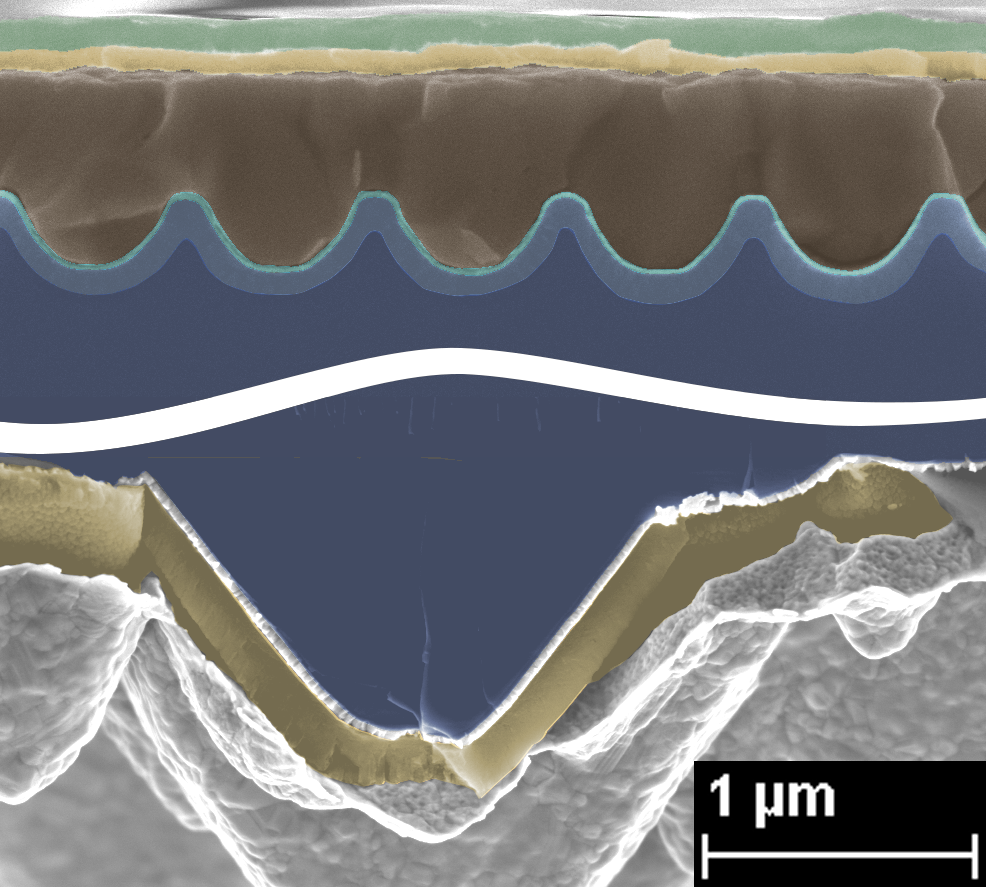Reviewed by Mila PereraOct 25 2022
Perovskite silicon tandem solar cells with an efficiency of close to 30% were presented by HZB researchers by the end of 2021. This value was a world record for eight months, a significant period of time in this hotly contested field of research.
 Scanning electron microscopy of perovskite silicon tandem cells in cross-section: a) planar, b) with corrugated nanotexture, c) with nanotexture and back-reflector layer (golden). Image Credit: © P. Tockhorn/HZB
Scanning electron microscopy of perovskite silicon tandem cells in cross-section: a) planar, b) with corrugated nanotexture, c) with nanotexture and back-reflector layer (golden). Image Credit: © P. Tockhorn/HZB
In the renowned journal Nature Nanotechnology, the researchers describe how they obtained this record value using nano-optical structuring and reflective coatings.
Tandem perovskite and silicon solar cells enable much higher efficiencies than silicon solar cells alone. HZB's tandem cells have already set multiple world records.
Most recently, in November 2021, HZB research groups used a tandem cell comprised of perovskite and silicon to attain a certified efficacy of 29.8%. For eight months, this world record was unbroken and was not surpassed until the summer of 2022 by a Swiss team at EPFL.
Joined Forces
The record-breaking tandem cell resulted from close collaboration between three HZB teams. The specifics are now presented in Nature Nanotechnology. The team was also given the opportunity to summarize their findings and provide an outlook on future developments in a research briefing requested by the journal.
Textures Improve Performance
Our competences complement each other very well. Most surprising, this texture brings several advantages at once: it reduces reflection losses and ensures a more regular perovskite film formation.
Professor Dr. Christiane Becker, Professor, Helmholtz-Zentrum Berlin für Materialien und Energie GmbH
Professor Dr. Christiane Becker devised the world record cell with the group headed by Dr. Bernd Stannowski (silicon bottom cell) and Professor Dr. Steve Albrecht (perovskite top cell). Becker’s group introduced a nano-optical structure into the tandem cell; a gently corrugated nanotexture on the silicon surface.
Most surprising, this texture brings several advantages at once: it reduces reflection losses and ensures a more regular perovskite film formation.
Professor Dr. Christiane Becker, Professor, Helmholtz-Zentrum Berlin für Materialien und Energie GmbH
In addition, a dielectric buffer layer on the back of the silicon further minimizes parasitic absorption at near-infrared wavelengths.
The experts claim that customized nanotextures can aid perovskite semiconductor materials on various levels. These findings are useful for perovskite-based light-emitting diodes and tandem solar cells comprised of perovskite and silicon.
Journal Reference
Tockhorn, P., et al. (2022) Nano-optical designs for high-efficiency monolithic perovskite–silicon tandem solar cells. Nature Nanotechnology. doi.org/10.1038/s41565-022-01228-8.